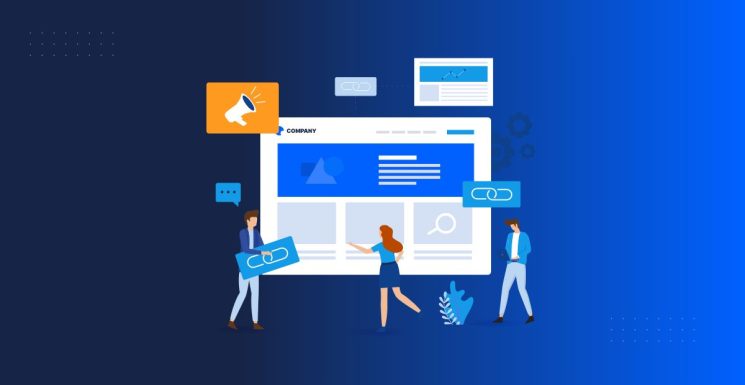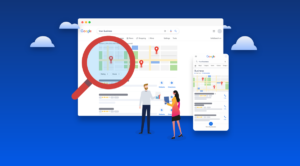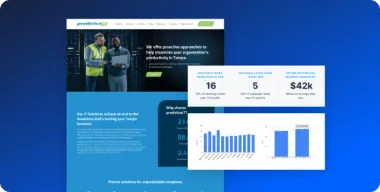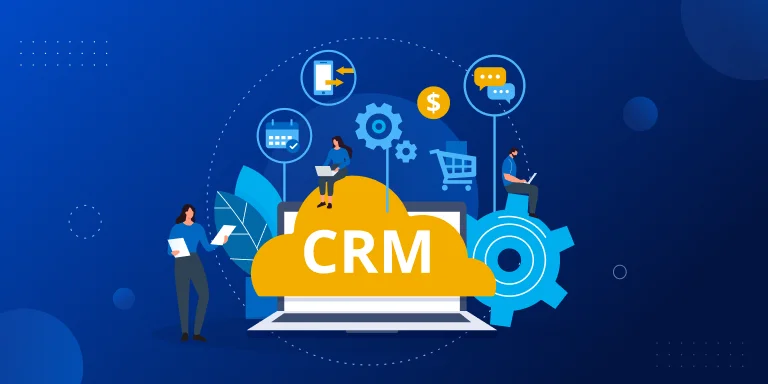You’ve landed here on this blog post! After this 20-minute read, you’ll be happy you did.
Now, I know you’re a seasoned professional, and you know your business inside out. You’ve weathered countless challenges and embraced every opportunity to grow. But it’s not enough to just have a great product or service. You need a way to slice through and reach your target audience effectively.
That’s where landing pages come in.
Unlike your website’s home page or service pages, which serve a more general purpose, landing pages are designed with a singular focus: to convert visitors into leads or customers.
They’re the hardworking, no-nonsense pages on your website, and when done correctly, they can make a real difference in your business’s growth.
Whether your goal is to build your email list, sell a product, or get more clients, a well-designed landing page can help you achieve it more efficiently. By providing a clear, direct path to action and eliminating distractions, landing pages make it easy for your target audience to take the next step in their journey with your business.
In the following sections, I’ll dive into the fine details of creating landing pages that resonate with your audience and drive conversions. We’ll cover everything from understanding your target market and setting clear goals to designing for impact and optimizing for performance.
Quick summary
✅ Landing pages are standalone web pages designed with a single, specific goal in mind: to convert visitors into leads or customers.
✅ Tailoring your landing page to your target audience, setting clear goals, and aligning design and content with those objectives are essential for creating effective landing pages.
✅ Implement best practices for design, content, trust, and credibility to create landing pages that resonate with your audience and drive conversions.
✅ Continuously optimize your landing pages using A/B testing and analytics to improve performance and achieve your business goals.
Understanding Landing Pages
To really leverage landing pages for your business, it’s essential to grasp what they are and how they differ from other pages on your website. A lot of our clients have the wrong idea about landing pages, so I’ll break it down in detail.
Defining a Landing Page
A landing page is a standalone web page designed with a single, specific goal in mind: to convert visitors into leads or customers.
It’s where a visitor “lands” after clicking on a link from an email, a Google Ad, or other digital location. Unlike other pages on your website, a landing page is hyper-focused on a particular offer or objective, such as signing up for a newsletter, downloading an eBook, or purchasing a product or service outright.
Let’s take a look at a simple wireframe of a typical landing page:

As you can see, a landing page consists of a bunch of key elements that work together to guide visitors towards a desired action.
Landing Pages vs. Other Pages
Landing pages, home pages, and service pages all aim to generate interest… but they serve different purposes and have distinct characteristics.
First, your website’s homepage is like a storefront, providing an overview of your business and offerings. It’s designed to be a starting point for exploration, with links and navigation to other pages.
Service pages, on the other hand, offer in-depth information about specific products or services, often with the goal of educating and nurturing leads.
Landing pages, however, are more like a specific aisle or shelf in a store, dedicated to a single product or offer. They’re designed to be the end point of a visitor’s journey, with a clear call-to-action (CTA) and minimal distractions. By eliminating navigation links and focusing on a single message, landing pages can significantly increase conversion rates compared to other pages.
The Action-Oriented Nature of Landing Pages
Every single element on the page, from the headline and copy to the visuals and CTA, needs to be carefully crafted to persuade visitors to take a specific action.
Whether you’re offering a free consultation, a discount code, or a gated piece of content, your landing page should make it crystal clear what visitors will get in exchange for their information or commitment.
How to Tailor Your Landing Page to Your Audience
Ok, now that you understand the fundamentals of landing pages, let’s look into one of the most crucial aspects of creating effective ones: tailoring them to your target audience.
Go through your customers in your head. They are all different, right? They have different needs, preferences, and motivations. And to create landing pages that truly resonate, you need to have a full understanding of who your audience is and what they’re looking for.
Identifying and Understanding Your Target Audience
The first step in tailoring your landing page to your audience is to analyze and understand who they are. This involves getting serious about audience research, and to do that, you can tackle these two activities.
Market Segmentation: This involves dividing your audience into smaller groups based on shared characteristics:
- Demographics: Age, gender, income, education, location, etc.
- Psychographics: Values, interests, attitudes, personality traits, etc.
- Behavior: Purchase history, brand interactions, loyalty, etc.
- Needs: Problems they’re trying to solve, goals they want to achieve, etc.
By segmenting your audience this way, you can identify the most valuable and relevant groups to target with your landing pages.
Data Sourcing: To gather insights about your audience segments, you can zoom in on various data sources:
- Google Analytics: Provides valuable information about your website visitors, including demographics, interests, behavior, and acquisition channels.
- Customer Surveys: Asking your existing customers about their experiences, preferences, and pain points can provide valuable qualitative insights.
- Social Media Monitoring: Monitoring social media conversations and sentiment around your brand and industry can help you understand what your audience cares about and how they perceive your business.
Understanding User Intent
Once you have a clear picture of your target audience segments, the next step is to understand their intent.
What are they searching for?
What problems are they trying to solve?
What goals do they want to achieve?
By understanding these points, you can create landing pages that directly address your audience’s needs and motivations. For example, if you know that a particular segment is looking for a solution to a specific problem, you can create a landing page that highlights how your product or service solves that problem, using language and benefits that resonate with that audience.
Check out these common types of user intent:

Setting Clear Goals for Your Landing Page
The Importance of Clear, Specific Objectives
Types of Objectives
- Clearly communicate the value proposition, emphasizing what the user
- will gain in exchange for their information.
- Keep form fields minimal, only asking for essential information to reduce friction and increase conversions.
- Emphasize the no-obligation context, reassuring users that their
- information will not be misused or shared.
Sales Conversions: Sales conversion landing pages are designed to directly sell a product or service. These pages typically include more detailed information about the offering, such as features, benefits, and pricing.
Best Practices
- Highlight the benefits of the product or service, focusing on how it solves the user’s problem or meets their needs.
- Include user testimonials and social proof to build trust and credibility.
- Provide clear, transparent pricing information to help users make an informed decision.
Aligning Design and Content with Objectives
To ensure that your landing page achieves its intended objective, it’s crucial to align its design and content with that goal.
Consistency of Message: The messaging on your landing page should align with the user’s expectations set by the ads, emails, or social media posts that led them there. Every element, from the headline to the imagery, should reinforce the objective and maintain a consistent message throughout the user’s journey.
Design Elements: The design of your landing page should draw attention to the most critical elements, such as CTAs and key benefits. Use visual hierarchy, whitespace, and contrasting colors to guide the user’s eye towards the desired action. The user experience (UX) should facilitate a seamless journey towards achieving the objective, with easy navigation and a clear path to conversion.
Copywriting: The content on your landing page should speak directly to the intended objective. For lead generation pages, focus on educating the user about the value they will receive in exchange for their information. For sales pages, use persuasive language that highlights the benefits and unique selling points of your product or service. Tailor your copy to your target audience, addressing their specific pain points, needs, and desires.
By setting clear goals and aligning your design and content with those objectives, you can create landing pages that effectively drive conversions and achieve your business goals.
Landing Page Design and Technical Best Practices
One of the things often overlooked in landing pages is good, ergonomic design and technical optimization. Here are some key principles and strategies to ensure your landing page is user-friendly, visually appealing, and optimized for speed and performance.
User-Friendly Design Principles
Importance of Simplicity and Clarity:
A minimalist design reduces distractions and focuses the user’s attention on the core message and call-to-action (CTA). By eliminating unnecessary elements and clutter, you can create a clean, streamlined layout that guides the user towards the desired action.
- Use visual hierarchy, whitespace, and intuitive navigation to guide the user naturally through the content and towards the CTA. Break up text into short, scannable paragraphs and use bullet points to highlight key information. A clear, easy-to-follow layout is crucial for user engagement and conversion.
Mobile Responsiveness
Designing for Various Devices and Screen Sizes:
- Ensure your landing page is fully responsive and optimized for mobile devices and other various screen sizes. Responsive design adapts the layout and content to provide an optimal viewing experience across desktops, tablets, and smartphones.
- Implement responsive design principles, such as fluid grids, flexible images, and CSS media queries, to ensure your landing page looks great and functions well on all devices. Test your page on multiple devices and browsers to identify and fix any compatibility issues.
Use of Color and Imagery
Quick Primer on Color Psychology:
Colors can evoke specific emotions and influence user behavior. For example, blue is often associated with trust and reliability, while red can create a sense of urgency or excitement. Understanding color psychology can help you choose a color scheme that aligns with your brand identity and the message you want to convey. Here’s a simple guide:
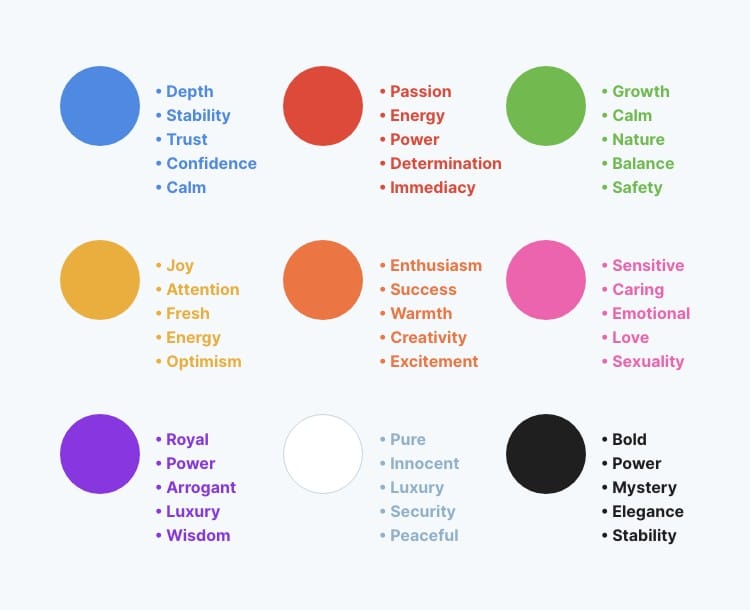
- Use a consistent color palette throughout the page to create a cohesive and professional look. Avoid using too many colors, as this can be overwhelming and distracting. Consider your target audience, industry, and the overall tone of your campaign.
Positioning Images Effectively:
- Use high-quality images that complement your content and reinforce your message, such as product shots, customer photos, or illustrative graphics.
- Position images strategically to draw attention to key elements and guide the user’s eye towards the CTA. Avoid using generic stock photos that lack authenticity and relevance to your brand. Optimize images for web use to ensure fast loading times without sacrificing quality.
Speed Optimization
Correlation Between Page Load Speed and User Experience:
Page load speed is so critical in user experience and conversion rates. Studies show that a one-second delay in page load time can result in a 7% reduction in conversions. Users expect pages to load quickly, with industry benchmarks suggesting a maximum load time of 2-3 seconds. We’ve all been there waiting for a page to load, it’s not exactly a good first impression. Let’s look at how to avoid those long load times.
- Prioritize speed optimization techniques throughout your landing page development process. Regularly test your page speed using tools like Google PageSpeed Insights and implement recommended optimizations.
Tips for Improving Page Load Speed 💨
✅ Image Optimization: Use appropriate file formats (e.g., JPEG for photographs, PNG for graphics) and compress images to reduce file sizes without compromising quality. Implement lazy loading for landing page images below the fold to prioritize visible content.
✅ Minimizing HTTP Requests: Reduce the number of scripts, CSS files, and other resources that require separate HTTP requests. Combine and minify files where possible to minimize server requests and improve loading times.
✅ Content Delivery Networks (CDNs): Leverage CDNs to serve your landing page content from servers closer to the user’s geographic location, reducing latency and improving load times for global audiences.
✅ Browser Caching: Implement browser caching to store static resources (e.g., images, CSS, JavaScript) on the user’s device, allowing for faster subsequent page loads and improved performance.
Landing Page Content Best Practices
Creating compelling content is crucial for the success of your landing page. In this section, we’ll discuss best practices for crafting headlines, using persuasive copywriting techniques, and optimizing calls-to-action (CTAs) to engage your target audience and drive conversions.
Headlines That Capture Attention
Writing Headlines That Resonate with Your Target Audience:
- Start by developing a deep understanding of your target audience’s needs, pain points, and desires. Conduct thorough research to identify the language and messaging that resonates with them.
- Craft headlines that directly address your audience’s challenges or goals, using language that is familiar and relatable to them.
Balancing Clarity and Creativity:
- Your headline should clearly communicate the main benefit or value proposition of your offer, so the user instantly knows what the page is about.
- At the same time, inject creativity into your headlines to capture interest and stand out from competitors. Use unique angles, compelling word choices, or thought-provoking statements to grab attention.
Incorporating Power Words and Emotional Triggers:
- Use power words that evoke strong emotions or create a sense of urgency, such as “exclusive,” “limited,” “proven,” or “revolutionary.”
- Tap into emotional triggers that resonate with your audience, such as fear, desire, curiosity, or social proof, to encourage them to take action.
Landing Page Headline Formulas 📋
How-to Headlines:
“How to” headlines promise a solution or learning opportunity, making them effective for addressing specific problems or challenges your audience faces.
Example:
“How to Achieve a Brighter, Healthier Smile in Just 3 Easy Steps”
Question Headlines:
Posing a question in your headline can be engaging as it provokes thought and encourages the reader to seek answers.
Example:
“Are Your Clients’ IT Systems Vulnerable to Costly Downtime?”
List Headlines:
List-based headlines (e.g., “5 Ways to…,” “10 Tips for…”) promise quick, easy-to-digest content and are effective for capturing attention and providing value.
Example:
“6 Smart Tax Planning Strategies to Keep More of Your Hard-Earned Money”
Persuasive Copywriting Techniques
While providing valuable information is important, your landing page copy should also persuade visitors to take action. Use storytelling techniques to create a narrative around your product or service, helping your audience connect emotionally with your offer.
Let’s go through some persuasive copywriting frameworks…
PAS (Problem-Agitate-Solution):
Identify a problem your audience faces, agitate the pain points associated with that problem, and then present your offer as the solution.
AIDA (Attention-Interest-Desire-Action):
Grab attention with a strong headline, build interest by highlighting benefits, create desire by showcasing social proof and testimonials, and prompt action with a clear CTA.
StoryBrand:
Position the customer as the hero of the story and your brand as the guide who helps them overcome challenges and achieve their goals.
PPPP (Picture-Promise-Prove-Push):
Paint a picture of the current situation, make a promise about how your offer can improve it, prove your claims with evidence and testimonials, and push for action with a strong CTA.
Call-to-Action (CTA) Best Practices
Writing Clear and Compelling CTAs:
- Use direct, action-oriented language in your CTAs, such as “Get Started,” “Join Now,” or “Claim Your Free Trial.”
- Frame your CTAs in a way that emphasizes the benefit the user will receive by taking action, such as “Unlock Exclusive Savings” or “Boost Your Traffic Today.”
- Create a sense of urgency or scarcity in your CTAs to encourage immediate action, using phrases like “Limited Time Offer” or “Only X Spots Available.”
Examples of Good and Bad CTAs
✅ Good CTAs are clear, concise, and compelling, such as “Request Your Confidential Case Evaluation” or “Book Your Personalized Financial Review.”
❌ Bad CTAs are vague, generic, or passive, such as “Click Here,” “Submit,” or “Learn More.”
CTA Placement and Design:
- Place your primary CTA in a prominent position, ideally above the fold, to ensure visitors can easily find and click on it.
- Repeat the CTA throughout the page, especially for longer landing pages, to provide multiple opportunities for visitors to take action.
- Use contrasting colors and ample whitespace around your CTA buttons to make them visually distinct and easy to click.
Trust and Credibility Best Practices
Put yourself in your customer’s shoes. Wouldn’t you like to see at least a few positive endorsements before jumping into a new service or product? Absolutely, right? So, let’s look at some best practices for incorporating social proof, showcasing certifications and awards, and creating transparent and trustworthy content.
Social Proof and Testimonials
Social proof is a powerful psychological concept that influences people’s decisions based on the actions and opinions of others. By featuring testimonials, case studies, or client logos on your landing page, you can demonstrate that other people have successfully used and benefited from your services.
- Include testimonials from satisfied clients that highlight specific benefits or results they achieved through working with you. Use real names, photos, and titles to add authenticity.
- Showcase case studies that tell a story of how you helped a client overcome a challenge or reach a goal. Provide concrete examples and data to illustrate the impact of your services.
- Display logos of well-known clients or industry partners to establish credibility and show that you have experience working with reputable organizations.
- Highlight relevant certifications, awards, or endorsements on your landing page to build trust and demonstrate your expertise in your field.
- For example, if you are a dentist, showcase memberships in professional organizations like the American Dental Association (ADA) or display any specializations or advanced training certifications.
- Or if you are a financial advisor, showcase your professional designations (e.g., CFP, CFA, CPA), membership in industry associations, or any awards or recognition from financial institutions or media outlets.
Transparent and Trustworthy Content
I want to keep this one simple — be honest and upfront about your services, pricing, and what visitors can expect when working with you. Avoid the bait and switch and just be real about who you are and what you do. Consider these tips:
- Clearly communicate your services, processes, and deliverables, so visitors know exactly what they’re getting when they engage with your firm.
- If you mention pricing on your landing page, be transparent about your fees and any additional costs or charges. Avoid hidden fees or surprises that could erode trust.
- Use clear, concise language and avoid jargon or technical terms that may confuse or alienate visitors. Aim for a tone that is professional, approachable, and easy to understand.
- Provide links to your privacy policy, terms of service, or any other relevant legal documents to show that you take data protection and client confidentiality seriously.
- Avoid making bold claims or guarantees that you can’t follow through on, such as “We’ll double your revenue in 30 days!” or “Our services are 100% risk-free!.”
- Add a video to add a face and personality to the company and the offer itself.
Conversion Optimization Strategies
With all those best practices, you should have no problem drafting a great landing page. But, creating a well-designed landing page is just the first step in achieving your marketing goals. To really maximize the effectiveness of your landing page, you need to continuously optimize it based on data and user behavior.
Here, we’ll explore two powerful conversion optimization strategies:
A/B Testing for Improved Performance
A/B testing, also known as split testing, is a method of comparing two versions of a landing page to determine which one performs better in terms of conversions. By sending half of your traffic to version A and half to version B, you can gather data on which design, copy, or layout elements resonate most with your audience. This data-driven approach takes the guesswork out of optimization and allows you to make informed decisions based on real user behavior.
For example, let’s say you’re a financial advisor looking to improve the conversion rate of your landing page. You might create two versions of the page: one with a headline that emphasizes “Maximize Your Retirement Savings” and another that says “Protect Your Financial Future.” By running an A/B test, you can determine which headline resonates better with your target audience and leads to more conversions.
Some key elements to test on your landing page include:
Headings: Try different headline variations that speak to your audience’s pain points or goals, and see which one generates more interest and engagement.
CTAs: Experiment with different CTA wording, color, size, and placement to find the combination that drives the most clicks and conversions. For instance, a law firm might test “Schedule Your Free Consultation” versus “Protect Your Rights Now” to see which CTA is more effective.
Images: Use A/B testing to determine which images or videos resonate best with your audience. A dental practice might test a photo of a smiling patient versus an image of their state-of-the-art equipment to see which one builds more trust and credibility.
Forms: Test different form designs and lengths to find the optimal balance between gathering important information and minimizing friction for the user. An MSP might experiment with a short form that only asks for name and email versus a longer form that includes company size and current IT setup.
By continuously testing and iterating on your landing page design, you can fine-tune your approach and create a page that is optimized for your specific audience and goals.
Analytics and Key Performance Indicators (KPIs)
To make data-driven optimization decisions, you MUST track the right metrics and KPIs for your landing page. Some key metrics to keep an eye on include:
Conversion rate: This is the percentage of visitors who complete the desired action on your landing page, such as filling out a form or making a purchase. A high conversion rate indicates that your landing page is effectively persuading visitors to take action.
For example, if a law firm’s landing page has a conversion rate of 10%, that means 10 out of every 100 visitors are scheduling a consultation or reaching out for more information.
Time spent on page: This metric shows how long visitors are staying on your landing page, which can indicate their level of engagement and interest. If visitors are quickly bouncing off the page, it may be a sign that the content is not resonating or that the page is not meeting their expectations.
On the other hand, if visitors are spending several minutes on the page, it suggests that they are finding the information valuable and are more likely to convert.
Bounce rate: This is the percentage of visitors who leave your landing page without taking any action or visiting any other pages on your site. A high bounce rate can indicate that there is a disconnect between your ad or traffic source and the content on your landing page.
For example, if a dental practice is running ads for “affordable teeth whitening” but their landing page focuses on general dental services, visitors may quickly bounce off the page because it doesn’t match their expectations.
By regularly monitoring these metrics, you will be able to identify areas for improvement and make data-driven decisions to optimize your landing page. For instance, if you notice that your conversion rate is low but your time spent on page is high, it may indicate that visitors are interested in your offer but something is preventing them from taking action. In this case, you might experiment with different CTAs or form designs to make it easier for visitors to convert.
Similarly, if you have a high bounce rate, you may need to revisit your ad targeting or traffic sources to ensure that you’re attracting the right audience to your landing page. You might also consider adding more relevant and compelling content to keep visitors engaged and encourage them to explore further.
Post-Conversion Strategies: How to Nurture Leads and Customers
Congratulations! Your landing page has successfully converted a visitor into a lead or customer. But your work cannot end here. To truly maximize the value of each conversion and build long-term relationships with your audience, you need to have a solid post-conversion strategy in place.
Effective Thank You Pages
The thank you page is the first page your new lead or customer sees after completing your desired action, such as filling out a form or making a purchase. This page serves as a major touchpoint in the customer journey and can set the tone for your ongoing relationship.
An effective thank you page should include clear guidance on what the customer can expect next, such as a follow-up email, product delivery information, or access to resources.
Back to our financial advisor example. You just converted a visitor into a lead through a retirement planning checklist download. Your thank you page might say something like…

Now, this is a very basic example, I just wanted to visualize it for you. But you can take it even further. Your thank you page can also be an opportunity to provide additional value and cross-sell related products or services.
A good thank you page will provide a warm welcome, set clear expectations, and offer additional value. You can create a positive first impression and encourage your new leads or customers to engage further with your business.
Email Follow-Ups and Continuation of the Customer Journey
As I just alluded to, the customer journey doesn’t end with the thank you page. To nurture your new leads and customers and guide them towards a long-term relationship with your business, you need to have a strategic email follow-up plan in place. The key is to find the right balance between maintaining engagement and providing value without overwhelming or annoying your audience.
The optimal timing and frequency of your follow-up emails will depend on your industry, audience, and specific offer.
The key is to put yourself in your audience’s shoes and think about what information and resources would be most valuable to them at each stage of the customer journey.
By providing a mix of educational content, personalized recommendations, and clear calls-to-action, you can keep your leads and customers engaged and motivated to take the next step with your business — and that’s what it’s all about.
Some best practices for email follow-ups include:
- Segmenting your audience based on their specific interests, needs, or behaviors and tailoring your messaging accordingly.
- Using a clear, compelling subject line that encourages opens and sets expectations for the content within.
- Personalizing your emails with the recipient’s name, company, or other relevant details to create a sense of one-to-one communication.
- Providing value in every email, whether it’s through educational content, exclusive offers, or personalized recommendations.
- Including a clear call-to-action that guides the recipient towards the next step in the customer journey, such as scheduling a call, making a purchase, or downloading a resource
- Monitoring your email metrics, such as open rates, click-through rates, and unsubscribes, and adjusting your strategy based on what’s working and what’s not.
Conclusion
If you’ve made it this far, congratulations! By now, you should have a full understanding of what it takes to create high-performing landing pages that drive real results for your business.
We’ve covered a lot of ground in this guide, from the fundamentals of landing pages and audience targeting to design best practices, compelling content creation, and post-conversion strategies. And while this level of detail may seem overwhelming at first, it’s important to remember that when it comes to landing pages, every element matters.
Think about it this way: your landing page is often the first interaction a potential customer has with your business. It’s your chance to make a great first impression, showcase your unique value proposition, and persuade visitors to take action. That’s why it’s so important to take a comprehensive, data-driven approach to landing page creation and optimization.
But we also know that creating high-performing landing pages is easier said than done, especially if you’re new to digital marketing or don’t have a lot of technical expertise. That’s where we can help.
We’ve helped countless businesses just like yours create landing pages that drive traffic, leads, and sales. Our team of experts has the knowledge, skills, and experience to guide you through every step of the process, from strategy and design to development and optimization.
So if you’re ready to take your landing pages to the next level and start seeing real results from your digital marketing efforts, we invite you to schedule a free consultation with our team.

